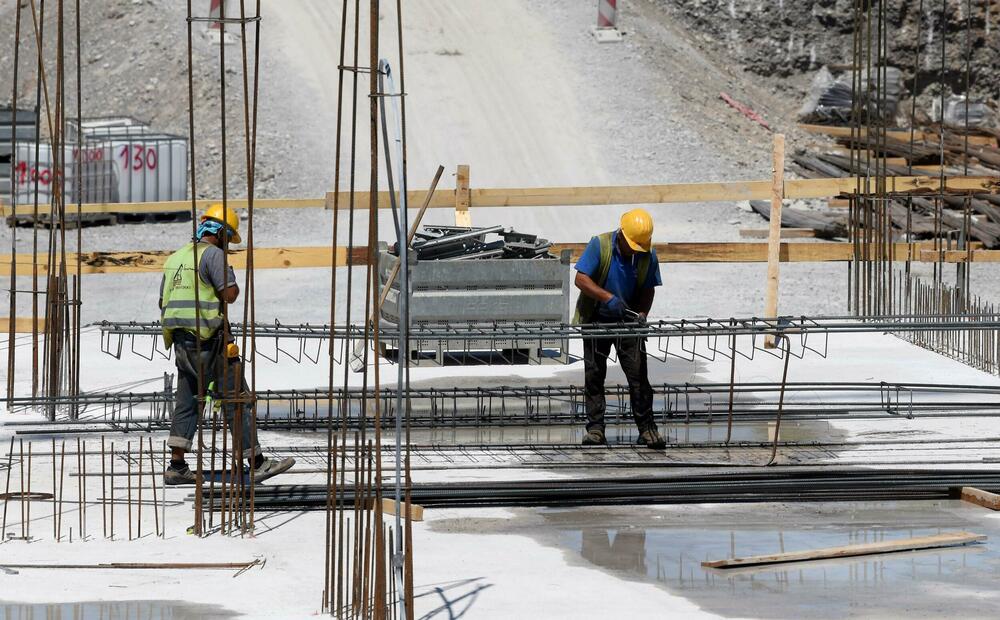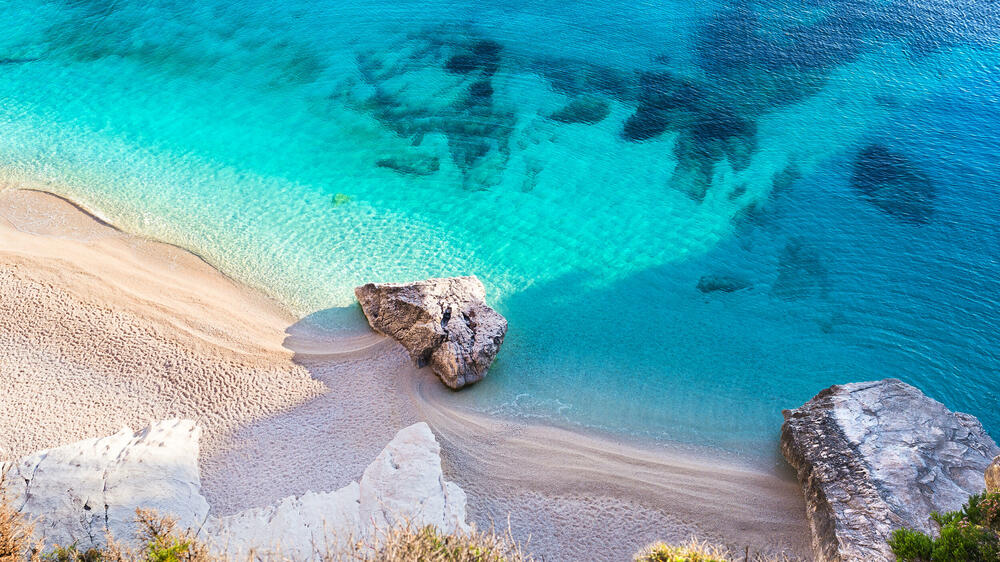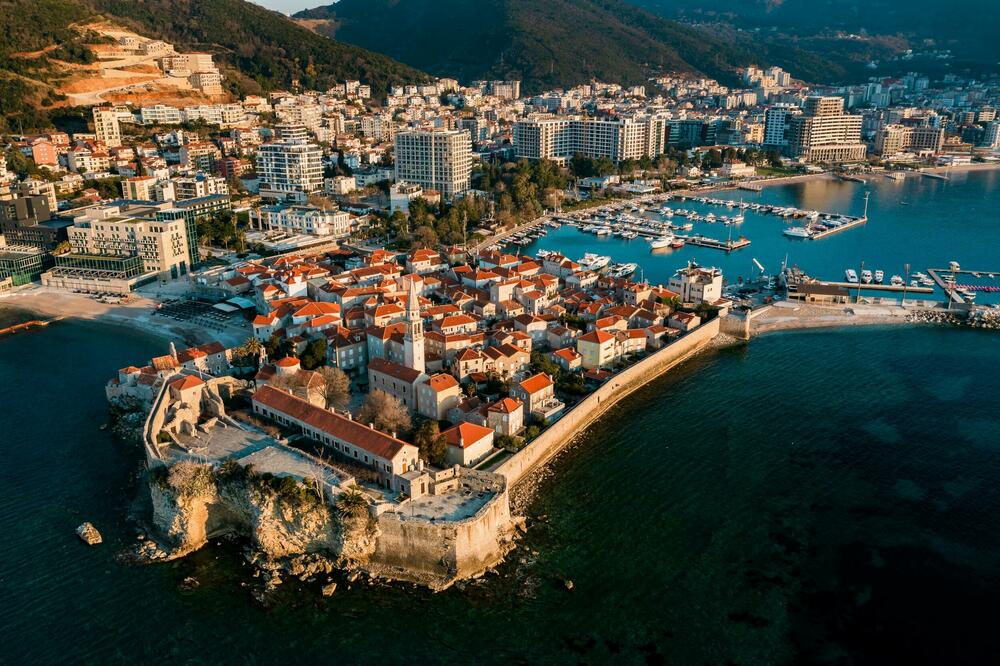Montenegro has the opportunity to provide high-quality tourist projects and become a prestigious Mediterranean and mountain destination, but it must solve a large number of problems such as excessive residential construction along the coast, insufficient communal and traffic infrastructure, weak traffic connections, weak environmental awareness..., stated is, among other things, in the draft Spatial Plan of Montenegro until 2040.
Excessive residential construction along the coast, as stated, prevents the development of quality tourist content and reduces the exclusivity of the location. For this reason, it is proposed that in urban areas on the coast, the construction of residential buildings be limited to a zone of 100 meters from the coast, and outside urban areas, that they cannot be built even a thousand meters near the coast.
Only 1,4 percent of accommodation has five stars
Limiting the construction of new facilities for so-called private accommodation is also overlooked, in order to use as many of the remaining sites as possible for the construction of luxury hotels. It is stated that in 2019 there were 2.862 beds in five-star hotels, while there were 163 beds in registered private accommodation. That is, only 1,4 percent of accommodation was in five-star hotels.
The plan aims to encourage the growth of the number of beds in luxury hotels at an annual rate of around 10 percent, while the growth rate of private accommodation is only 0,7 percent. Thus, in 2030, they would have three and a half times the number of beds in five-star hotels, so that they would then make up 4,1 percent of the total accommodation.
In order to achieve this, it is necessary to adjust the spatial and urban plans in order to prevent the further construction of residential buildings near the coast.
"Spatial plans in all regions of Montenegro should direct the development of accommodation capacities in the direction of diversification and high quality. A special challenge was mentioned in terms of the strong growth of private accommodation and capacity in non-commercial facilities, primarily in coastal areas, which burden the general infrastructure and in a certain part generate other negative consequences such as high seasonality and a lower level of general product quality", it was stated in document.
They suggest that the undeveloped areas of Buljarica, Jaz and Velika plaža should be reserved exclusively for the construction of luxury hotels of the highest rank, but that the remaining elite undeveloped areas along the coast should also be used for this purpose.
Need better roads, sewage...
The lack of infrastructure, i.e. "open problems of water supply", as well as insufficiently built sewage networks with waste water treatment, problems with waste, electricity supply...

Weaknesses include isolation from the main international corridors in road and rail traffic, insufficient capacity of local and intercity roads and parking in the peak season, the completely neglected issue of hotel specialization, insufficient diversification of the tourist product, lack of quality non-hotel offers, growing devastation of the coastal belt, national parks, protected forests...
Strong gray economy, lack of skilled personnel
The problem is also the "hyper-concentration of tourists in the season in the Primorsky region, based on the gray market" which "dramatically exceeds the carrying capacity of natural resources, especially beaches, nature and the environment of the narrowest coastal strip and infrastructure, and drastically reduces the quality of the overall tourist destination".
The weakness is also the lack of a sufficient number of younger staff with applied managerial skills, as well as the fact that "the existing tourism brand is tired", so its rebranding at the state level is needed.
They also state that the reconstruction of the existing offer is needed, as well as special plans for urban and tourism rehabilitation. They also propose the development of new hotel and non-hotel offers "with respect for protected areas and ecological principles of development".
"Market integration of the dispersed tourist product of Montenegro, through reliance on two market pillars - mass bathing tourism of higher quality and alternative tourism of high quality based on rich cultural and natural heritage. Achieving the integration of coastal and mountain tourism potentials. Modern education and training of hotel staff in already established educational centers, especially those that practice verified international education programs. Preparation of domestic infrastructure (plans, private local partners) for green field investments by renowned partners, including international "big players". Urban revitalization and refinement of public spaces through innovative urban development projects. Relieving road traffic routes and development of public road and water traffic" are just some of the proposals of the authors of the plan.
Avoid investors who don't like controls
The dangers that can affect the failure to meet the goals of the plan on increasing the quality of the tourist offer are also mentioned.
"Uncoordinated process of making regional and local spatial and urban plans. Ineffective suppression of housing construction in tourist areas. Ignoring the recommendations from the innovative master plan until 2020, through the process of uncontrolled involvement of businessmen, who are not inclined to respect the plans and institutional control. Realization of tourism projects that are risky for disrupting local communities and eco-systems", the document states, with the assessment that the continuation of these bad practices would lead to a weakening of the tourist image of Montenegro.

The authors also remind that the Strategy for the Development of Tourism in Montenegro until 2020 defined guidelines in order for Montenegro to become a year-round, high-quality tourist destination, which would create the conditions for the creation of new jobs, regulate unbalanced regional development and increase the standard of living of the citizens of Montenegro. It was also stated that the goals of this plan remained the same until 2040.
In the northern region, "the strongest rate of growth of quality capacities in hotels and similar facilities, but also capacity growth in specialized mountain camps (glamping and similar facilities)" is predicted. By 2030, the number of beds in the northern region is expected to increase from 4.353 to 10.100.
According to the authors of the plan, the official statistics do not specifically record sports and recreational facilities in tourist places or in tourist complexes. They warn that there are no statistical records or strategies for the development of sports tourism in Montenegro.
The beaches are too small, they should be expanded and cleaned of waste
Montenegro, as stated in the plan, has 98 beaches with a total length of about 106 kilometers, which are among the most beautiful beaches of the Adriatic.
"Their capacity, according to the standard of 5 to 10 square meters per bather, is about 270 thousand simultaneous bathers, while the need for beach space is 364 thousand estimated guests in the peak season. Therefore, there is a lack of space for 94 thousand bathers. When you add to this the fact that the beaches are occupied by catering inventory, the shortage is much greater," the document states.

The authors propose investments in new beach facilities, in order to provide places for another 110.000 bathers.
"Existing data show that beach waste pollution is above the proposed basic and limit values, and for the amount of waste on Montenegrin beaches, expressed as the number of pieces per 100 square meters, it can be concluded that a good state of the environment has not been achieved," the document states.
"By house" 67 percent of accommodation capacity
The authors state that according to the 2011 census, there were 120 apartments for seasonal housing on the coast, and they estimate that this number has now increased to 140.
"The assessment is that the existing structure of accommodation capacities is not in accordance with the strategic goals of tourism development, especially the planned increase in the share of basic accommodation capacities. "Weekend houses and apartments, as an undesirable type, participate with 67% of the total capacity," the document states.
The authors also say that the new residential areas on the coast (Luštica Bay, Porto Montenegro, Porto Novi) have not yet significantly influenced the enrichment of the hotel offer, because their concept envisages a greater focus on residences and their sale or rent, and not on the development of the hotel business.
Bonus video:




